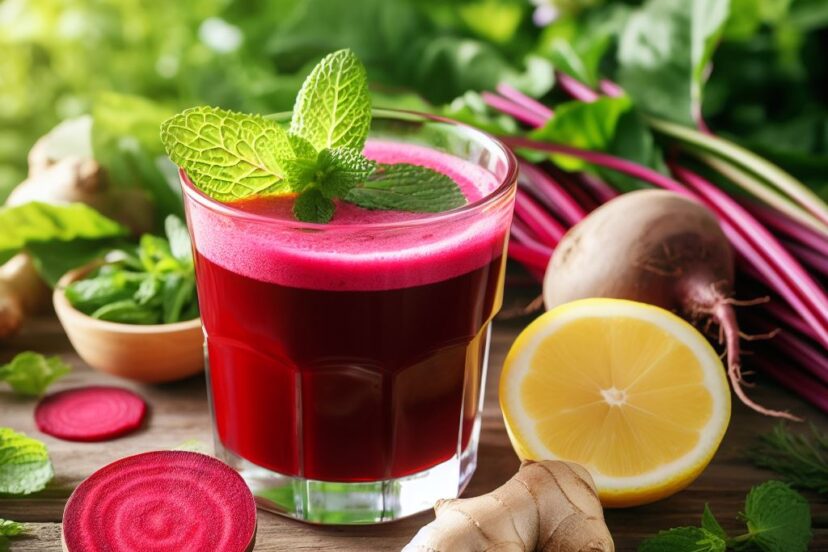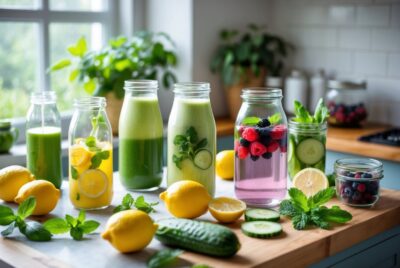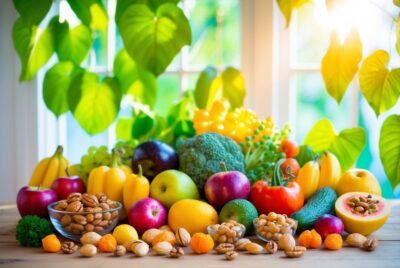Juicing 101: Your Complete Guide to Juicing
*We may earn a commission for purchases made using our links. Please see our disclosure to learn more.
Juicing 101: Essential Tips for Beginners
This Juicing 101 guide has become a popular way to boost health and enjoy a variety of nutrients in one easy drink. As a beginner, you might be wondering how to start juicing and what benefits it brings. It allows you to consume a wide range of vitamins, antioxidants, and phytonutrients that support overall well-being.

Choosing the right juicer and ingredients is key to making the most out of your juicing experience. It’s not just about throwing some fruits and veggies together; understanding which combinations work best can enhance both taste and nutritional value. By learning a few basics, you’ll be better equipped to create delicious and healthful juices.
Remember to wash and prepare your produce properly. Soaking veggies and brushing fruits can remove pesticides and other residues, ensuring a cleaner, safer juice. With the right approach, juicing can become a fun, efficient way to uplift your daily diet.
The Benefits of Juicing

Juicing can help improve nutrient absorption, support hydration and digestion, and allow for customized nutrient intake. This makes it a popular choice for boosting wellness.
Nutrient Absorption
When I juice fruits and vegetables, I break down their fibers. This process makes nutrients like vitamins and minerals more accessible. My body can absorb these nutrients quickly and efficiently.
Juicing vs. Eating Whole Foods:
| Whole Foods | Juicing |
| Contains fiber | Fiber removed |
| Takes time to digest | Quick absorption |
| Lower concentration of nutrients per same volume | Higher concentration of nutrients per same volume |
Regularly juicing can help me get a concentrated dose of nutrients without having to consume large amounts of whole fruits and vegetables.
Hydration and Digestion
Juicing provides me with a significant amount of water from fresh fruits and vegetables. This helps keep me hydrated throughout the day. Proper hydration is key to many bodily functions, including digestion.
The natural enzymes present in fresh juice also aid in my digestive process. These enzymes can help break down food more effectively than my body might on its own. I find that juicing certain vegetables like cucumber and celery is particularly useful for hydration. Fruits like watermelon and oranges also add a good deal of water content.
Customization of Nutrient Intake
One of the greatest benefits of juicing is the ability to customize nutrient intake according to my needs. By selecting specific fruits and vegetables, I can target particular vitamins and minerals.
For example, if I need more vitamin C, I can juice oranges, strawberries, or bell peppers. If I’m looking to add more iron, spinach and beet juice can be a good addition. This personalization allows me to address my dietary requirements dynamically.
Common Additions:
- For Vitamin C: Oranges, Kiwis, Strawberries
- For Iron: Spinach, Beets, Kale
- For Antioxidants: Blueberries, Grapes, Tomatoes
By regularly adjusting the ingredients I use, I can maintain a balanced and nutrient-rich diet without much hassle.
Juicing 101: Choosing Your Equipment

When starting your juicing journey, selecting the right equipment is crucial. It’s important to understand the types of juicers available, key features to look for, and how to maintain and clean your equipment.
Types of Juicers
There are three main types of juicers: centrifugal, masticating, and citrus juicers.
- Centrifugal Juicers: These are the most common and typically less expensive. They work by shredding fruits and vegetables with a fast-spinning blade. They produce juice quickly but may not extract as many nutrients.
- Masticating Juicers: Also known as slow or cold press juicers, these use a single auger to crush the produce. They are slower but tend to extract more juice and preserve more nutrients.
- Citrus Juicers: These are specifically designed for juicing citrus fruits. They can be manual or electric and are perfect if you only plan to juice oranges, lemons, grapefruits, and limes.
Essential Features
When choosing a juicer, certain features can make the process easier and the results better.
- Power: Look for a juicer with a powerful motor to handle tougher fruits and vegetables without clogging.
- Ease of Use: Consider models with large feeding chutes to reduce prep time. Controls should be simple and intuitive.
- Juicing Efficiency: Higher-end juicers often extract more juice, leaving you with less waste. Check for models that handle both hard and soft produce well.
- Noise Level: Some juicers can be very loud. If you prefer a quieter appliance, masticating juicers are generally less noisy than centrifugal ones.
Maintenance and Cleaning
Keeping your juicer clean is essential for hygiene and longevity.
- Ease of Disassembly: Look for juicers that are easy to take apart and put back together. Fewer parts generally mean easier cleaning.
- Dishwasher Safe: Some juicers have parts that are dishwasher safe. This can save you a lot of time.
- Cleaning Brushes: Many juicers come with special brushes designed to reach small areas and clean micro-mesh filters.
- Preventing Stains: Juicing can stain plastic parts. Soak stained parts in a mix of water and baking soda to keep your juicer looking fresh.
Selecting Your Ingredients

Choosing the right ingredients is key to making delicious and nutritious juice. It’s important to understand how different fruits and vegetables work together, create the best flavor combinations, and consider seasonal and organic options.
Understanding Fruits and Vegetables
When selecting fruits and vegetables for juicing, it’s essential to know their individual benefits. Leafy greens like kale and spinach are rich in vitamins, while roots like carrots and beets offer natural sweetness and antioxidants. Including a variety ensures a broad spectrum of nutrients. In addition, water-rich options like cucumbers and celery are excellent for hydration.
Fruits such as apples, oranges, and berries add natural sweetness and essential vitamins. However, it’s wise to balance sweetness by including low-sugar options like lemons and limes, which also provide a refreshing taste. Remember, diverse ingredients contribute to a balanced juice with multiple health benefits.
Combining Flavors
Creating the perfect juice blend involves understanding how different flavors complement each other. For instance, sweet fruits like apples and pineapples pair well with the earthy tones of greens such as kale. Adding a touch of ginger can introduce a spicy kick that enhances both flavor and health benefits.
I often focus on balancing sweetness and acidity to prevent any single flavor from overpowering the juice. To achieve this, combining tart ingredients like citrus fruits with sweet produce can create a pleasing balance. Experimenting with herbs like mint or basil can also add a unique twist to your juice.
Seasonal and Organic Options
Selecting seasonal fruits and vegetables ensures that your ingredients are at their peak flavor and nutrition. For instance, berries and watermelons are perfect for summer juicing, while oranges and pomegranates are ideal for winter months. Seasonal produce is usually fresher and more affordable since it doesn’t require long-distance shipping.
Choosing organic options reduces exposure to pesticides and other chemicals. While organic produce can be pricier, focusing on the Dirty Dozen list (produce that typically has higher pesticide residues) can help prioritize where to spend on organic. Using a blend of organic and conventionally grown ingredients can also be a practical approach to juicing.
Juicing Techniques

Knowing the right techniques can make a huge difference when it comes to juicing. From preparing your produce correctly to using the best juicing methods and storing your juice properly, every step is crucial.
Preparation of Produce
Preparing produce is the first step in juicing. I always start by washing all fruits and vegetables thoroughly to remove any dirt and pesticides. Depending on the type, some produce like carrots need peeling, while others like apples don’t.
For leafy greens, I chop them into smaller pieces to make juicing easier. Citrus fruits like oranges should be peeled but keep their seeds since they add nutrients. Removing any large pits from fruits like peaches or avocados is essential to avoid damaging the juicer.
Juicing 101: Juicing Methods
There are different methods of juicing, each with its advantages. I use two common types of juicers: centrifugal and masticating. Centrifugal juicers spin at high speeds and are great for hard fruits and veggies like apples and carrots. They’re fast but may produce heat, which can reduce some nutrients.
Masticating juicers, also known as cold press juicers, use a slower grinding method. They’re ideal for leafy greens, wheatgrass, and herbs because they extract more juice and retain more nutrients. It’s slower but produces higher quality juice. Choosing the right method depends on your ingredients and how much time you have.
Storage and Preservation
Storing juice properly ensures it stays fresh and maintains its nutrients. Once I finish juicing, I always drink it as soon as possible. If I need to store it, I use an airtight glass container to prevent oxidation.
Refrigerated juice should be consumed within 24 hours. For longer storage, freezing is an option; just leave some space in the container as liquids expand when frozen. Always thaw juice in the fridge and shake well before drinking. This way, you get the most out of your homemade juice.
Juicing 101: Recipes and Formulas

Juicing can be simple with the right recipes and understanding of ingredient combinations. Below, I share some basic recipes, tips for creating your own juices, and health-specific options.
Juicing 101: Basic Recipes for Beginners
Starting with basic recipes is essential. To make things easier, I suggest using familiar and high-yield ingredients.
Simple Green Juice:
- 2 cucumbers
- 4 stalks of celery
- 1 green apple
- 1 handful of spinach
- 1 small piece of ginger
Sweet Citrus Blend:
- 2 oranges
- 1 grapefruit
- 1 lemon
- 1 lime
Refreshing Melon Mix:
- 1/2 watermelon
- 1 small cantaloupe
- 1 lime
These recipes provide a balance of flavors and nutrients and are easy to prepare.
Juicing 101: Creating Your Own Juices
Experimenting with your own juices can be fun and rewarding. Start by selecting a base with high water content like cucumber or celery.
Tips for Creating Your Own Juices:
- Choose a base: Cucumber, celery, or apples.
- Add high-potency ingredients: Ginger, mint, or lemon.
- Balance flavors: Use both sweet (apples, carrots) and tart ingredients (lemon, lime).
- Adjust quantities: Taste and modify to suit your preference.
Think of this process as creating a balance of flavors and nutrients tailored to your liking.
Health-Specific Juicing
Juicing for health can target specific needs. Below are recipes aimed at common health issues.
Immune Boosting Juice:
- 3 oranges
- 2 carrots
- 1 small piece of turmeric
Detoxifying Juice:
- 1 beet
- 1 cucumber
- 1 handful of kale
- 1 lemon
Energy-Boosting Juice:
- 2 apples
- 1 handful of spinach
- 1 piece of ginger
These juices are made with ingredients known for their beneficial properties and are designed to help you feel your best.
Frequently Asked Questions for Juicing 101
In this section, I’ll address some common questions about juicing. I’ll cover beginner-friendly recipes, weight loss benefits, essential tips, ingredients to avoid, a quick-start guide, and the balance of fruits and vegetables in your juice.
1. What are the best recipes for someone new to juicing?
For beginners, simple recipes with familiar ingredients work best. Start with combinations like apple and carrot, or cucumber and mint. These are not only delicious but also provide a good introduction to the flavors and nutritional benefits of juicing.
2. How does juicing contribute to weight loss?
Juicing can help with weight loss by providing a low-calorie, nutrient-dense alternative to processed snacks and meals. Drinking fresh juice can keep you full and satisfied while giving your body the vitamins and minerals it needs.
3. What are the essential tips for juicing beginners?
First, read your juicer’s user manual to understand how to assemble and use it. Choose fresh, high-quality produce and wash everything thoroughly. Start with small batches to get the hang of it. Drink your juice immediately to benefit from the maximum nutrients.
4. Which ingredients should be avoided when juicing?
Avoid using highly starchy vegetables like potatoes, as they can make your juice gritty. Also, be cautious with high-sugar fruits like bananas and mangoes, as they can add unnecessary calories. Stick to fresh, organic produce whenever possible to avoid pesticides and preservatives.
5. How important is the balance of fruits to vegetables in a juice?
Balancing fruits and vegetables is crucial for both flavor and nutrition. Too many fruits can make your juice high in sugar, while too many vegetables can make it taste bitter. Aim for a ratio that’s about 80% vegetables and 20% fruits to maintain a balanced, nutritious juice.




